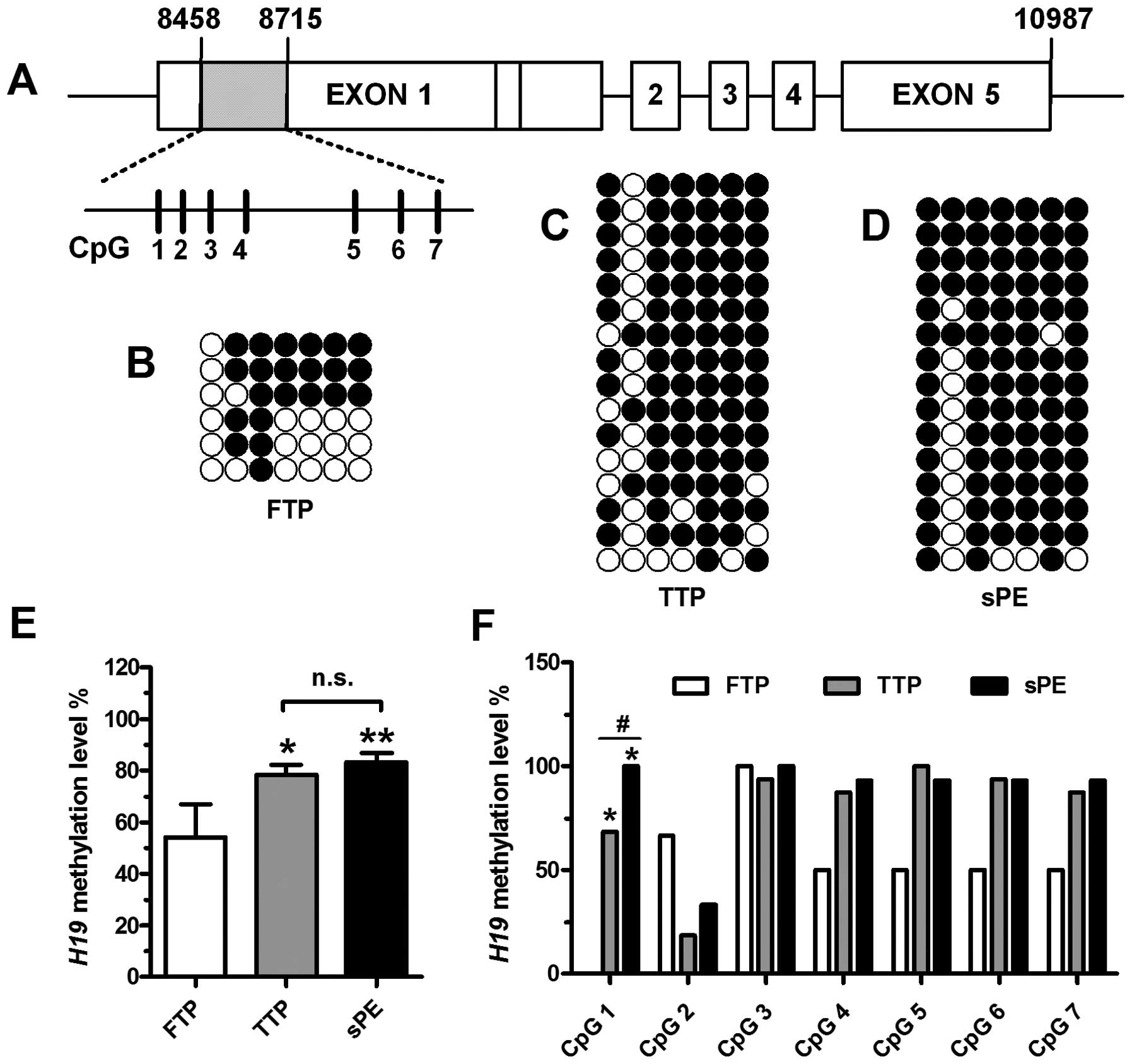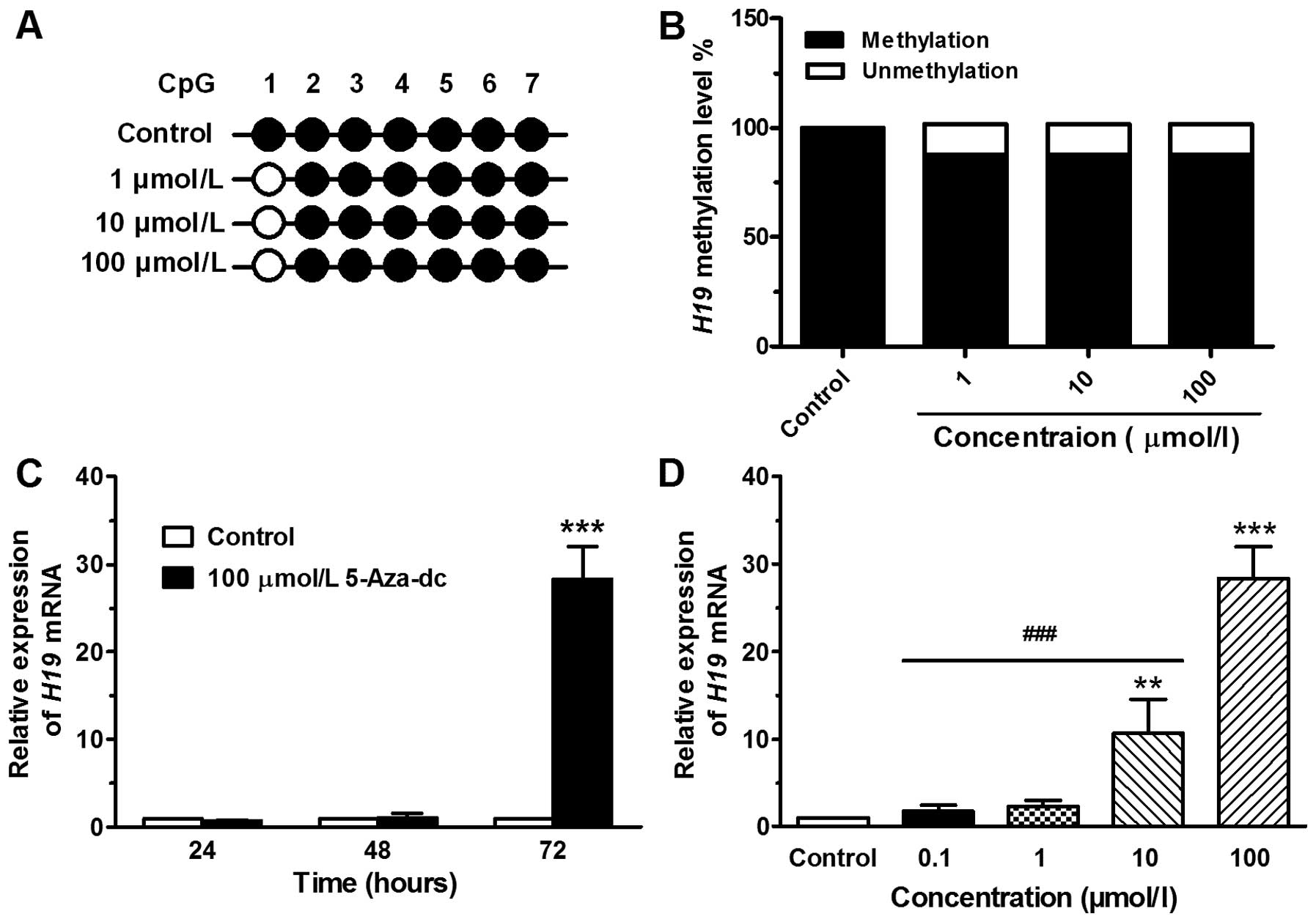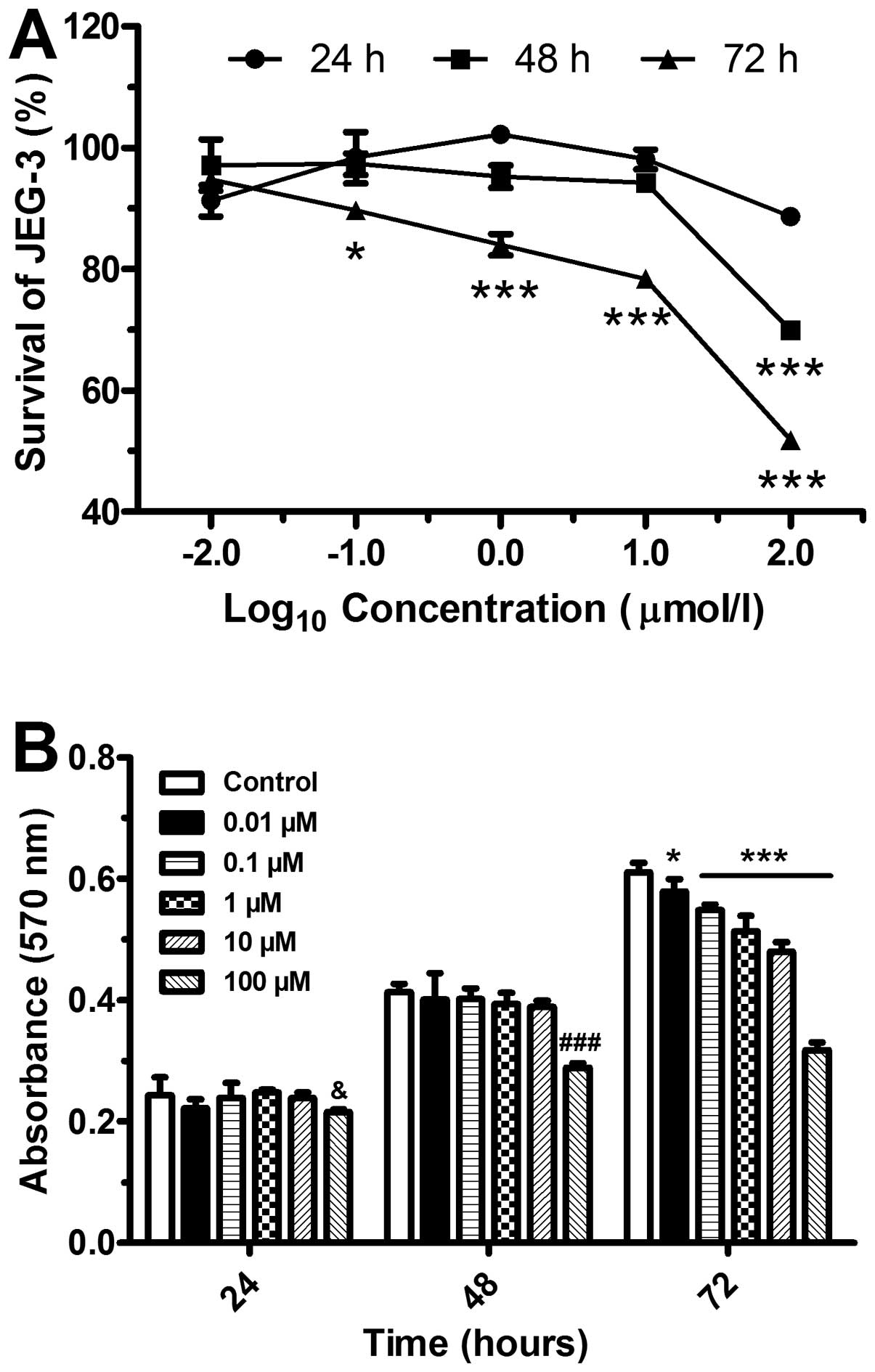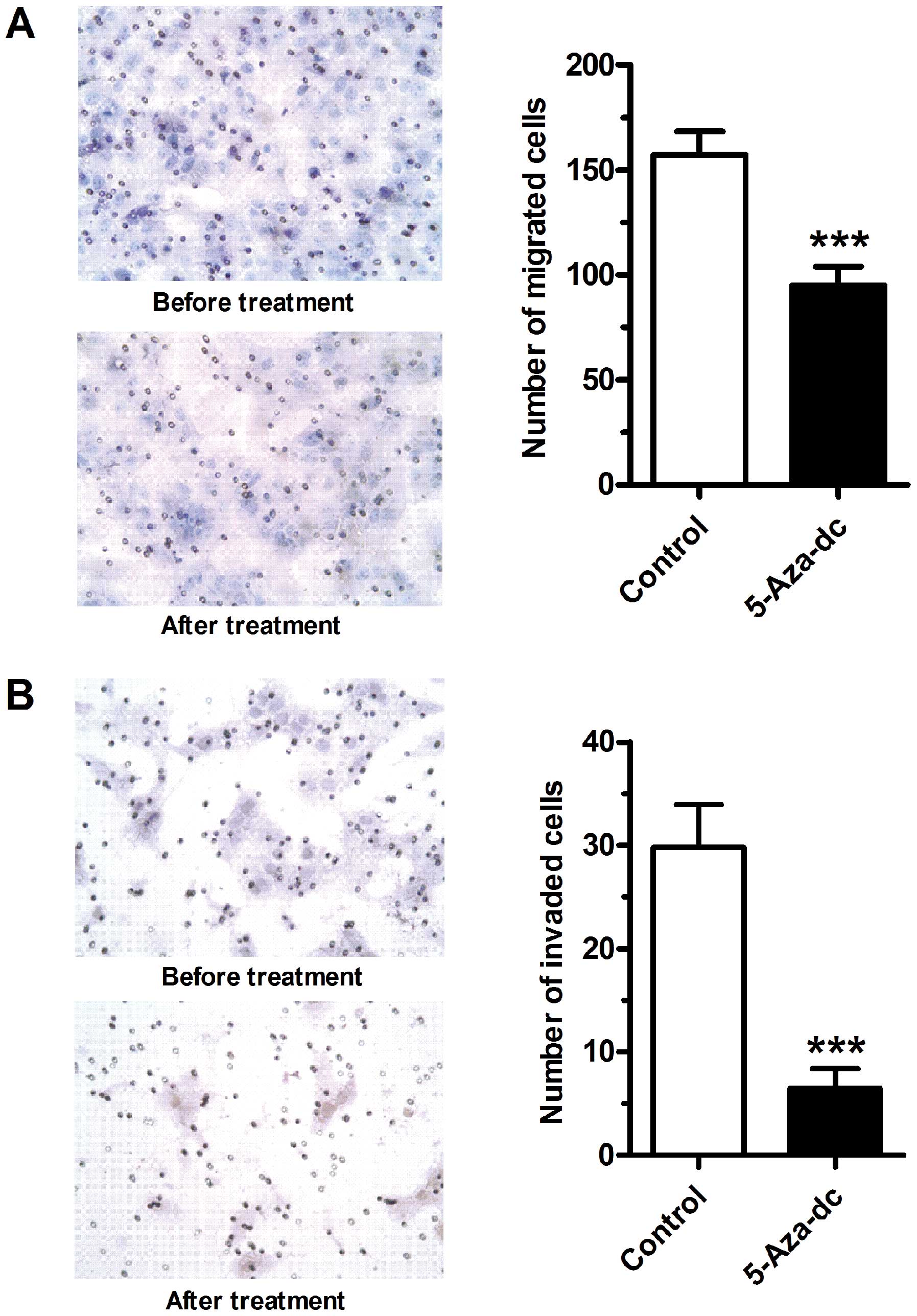|
1
|
Red-Horse K, Zhou Y, Genbacev O, et al:
Trophoblast differentiation during embryo implantation and
formation of the maternal-fetal interface. J Clin Invest.
114:744–754. 2004. View Article : Google Scholar : PubMed/NCBI
|
|
2
|
Merviel P, Carbillon L, Challier JC,
Rabreau M, Beaufils M and Uzan S: Pathophysiology of preeclampsia:
links with implantation disorders. Eur J Obstet Gynecol Reprod
Biol. 115:134–147. 2004. View Article : Google Scholar : PubMed/NCBI
|
|
3
|
Pachnis V, Belayew A and Tilghman SM:
Locus unlinked to alpha-fetoprotein under the control of the murine
raf and Rif genes. Proc Natl Acad Sci USA. 81:5523–5527. 1984.
View Article : Google Scholar : PubMed/NCBI
|
|
4
|
Pachnis V, Brannan CI and Tilghman SM: The
structure and expression of a novel gene activated in early mouse
embryogenesis. The EMBO J. 7:673–681. 1988.PubMed/NCBI
|
|
5
|
Brannan CI, Dees EC, Ingram RS and
Tilghman SM: The product of the H19 gene may function as an RNA.
Mol Cell Biol. 10:28–36. 1990.PubMed/NCBI
|
|
6
|
Szabo PE and Mann JR: Allele-specific
expression and total expression levels of imprinted genes during
early mouse development: implications for imprinting mechanisms.
Genes Dev. 9:3097–3108. 1995. View Article : Google Scholar
|
|
7
|
Keniry A, Oxley D, Monnier P, et al: The
H19 lincRNA is a developmental reservoir of miR-675 that suppresses
growth and Igf1r. Nat Cell Biol. 14:659–665. 2012. View Article : Google Scholar : PubMed/NCBI
|
|
8
|
Poirier F, Chan CT, Timmons PM, Robertson
EJ, Evans MJ and Rigby PW: The murine H19 gene is activated during
embryonic stem cell differentiation in vitro and at the time of
implantation in the developing embryo. Development. 113:1105–1114.
1991.PubMed/NCBI
|
|
9
|
Rachmilewitz J, Gileadi O, Eldar-Geva T,
Schneider T, de-Groot N and Hochberg A: Transcription of the H19
gene in differentiating cytotrophoblasts from human placenta. Mol
Reprod Dev. 32:196–202. 1992. View Article : Google Scholar : PubMed/NCBI
|
|
10
|
Yu LL, Chang K, Lu LS, et al:
Lentivirus-mediated RNA interference targeting the H19 gene
inhibits cell proliferation and apoptosis in human choriocarcinoma
cell line JAR. BMC Cell Biol. 14:262013. View Article : Google Scholar : PubMed/NCBI
|
|
11
|
Kafri T, Ariel M, Brandeis M, et al:
Developmental pattern of gene-specific DNA methylation in the mouse
embryo and germ line. Genes Dev. 6:705–714. 1992. View Article : Google Scholar : PubMed/NCBI
|
|
12
|
Avila L, Yuen RK, Diego-Alvarez D,
Penaherrera MS, Jiang R and Robinson WP: Evaluating DNA methylation
and gene expression variability in the human term placenta.
Placenta. 31:1070–1077. 2010. View Article : Google Scholar : PubMed/NCBI
|
|
13
|
Serman L, Vlahovic M, Sijan M, et al: The
impact of 5-azacytidine on placental weight, glycoprotein pattern
and proliferating cell nuclear antigen expression in rat placenta.
Placenta. 28:803–811. 2007. View Article : Google Scholar : PubMed/NCBI
|
|
14
|
Gao WL, Li D, Xiao ZX, et al: Detection of
global DNA methylation and paternally imprinted H19 gene
methylation in preeclamptic placentas. Hypertens Res. 34:655–661.
2011. View Article : Google Scholar : PubMed/NCBI
|
|
15
|
Bartolomei MS, Webber AL, Brunkow ME and
Tilghman SM: Epigenetic mechanisms underlying the imprinting of the
mouse H19 gene. Genes Dev. 7:1663–1673. 1993. View Article : Google Scholar : PubMed/NCBI
|
|
16
|
Creusot F, Acs G and Christman JK:
Inhibition of DNA methyltransferase and induction of Friend
erythroleukemia cell differentiation by 5-azacytidine and
5-aza-2′-deoxycytidine. J Biol Chem. 257:2041–2048. 1982.PubMed/NCBI
|
|
17
|
Ji L, Brkic J, Liu M, Fu G, Peng C and
Wang YL: Placental trophoblast cell differentiation: physiological
regulation and pathological relevance to preeclampsia. Mol Aspects
Med. 34:981–1023. 2013. View Article : Google Scholar : PubMed/NCBI
|
|
18
|
Altieri A, Franceschi S, Ferlay J, Smith J
and La Vecchia C: Epidemiology and aetiology of gestational
trophoblastic diseases. Lancet Oncol. 4:670–678. 2003. View Article : Google Scholar : PubMed/NCBI
|
|
19
|
Anin SA, Vince G and Quenby S: Trophoblast
invasion. Hum Fertil (Camb). 7:169–174. 2004. View Article : Google Scholar
|
|
20
|
Sibai BM: Diagnosis and management of
gestational hypertension and preeclampsia. Obstet Gynecol.
102:181–192. 2003. View Article : Google Scholar
|
|
21
|
Bourque DK, Avila L, Penaherrera M, von
Dadelszen P and Robinson WP: Decreased placental methylation at the
H19/IGF2 imprinting control region is associated with normotensive
intrauterine growth restriction but not preeclampsia. Placenta.
31:197–202. 2010. View Article : Google Scholar
|
|
22
|
Buckberry S, Bianco-Miotto T, Hiendleder S
and Roberts CT: Quantitative allele-specific expression and DNA
methylation analysis of H19, IGF2 and IGF2R in the human placenta
across gestation reveals H19 imprinting plasticity. PLoS One.
7:e512102012. View Article : Google Scholar
|
|
23
|
Yuen RK, Penaherrera MS, von Dadelszen P,
McFadden DE and Robinson WP: DNA methylation profiling of human
placentas reveals promoter hypomethylation of multiple genes in
early-onset preeclampsia. Eur J Hum Genet. 18:1006–1012. 2010.
View Article : Google Scholar
|
|
24
|
Yu L, Chen M, Zhao D, et al: The H19 gene
imprinting in normal pregnancy and pre-eclampsia. Placenta.
30:443–447. 2009. View Article : Google Scholar : PubMed/NCBI
|
|
25
|
Jones PA and Takai D: The role of DNA
methylation in mammalian epigenetics. Science. 293:1068–1070. 2001.
View Article : Google Scholar : PubMed/NCBI
|
|
26
|
Larsen F, Gundersen G, Lopez R and Prydz
H: CpG islands as gene markers in the human genome. Genomics.
13:1095–1107. 1992. View Article : Google Scholar : PubMed/NCBI
|
|
27
|
Smits G, Mungall AJ, Griffiths-Jones S, et
al: Conservation of the H19 noncoding RNA and H19-IGF2 imprinting
mechanism in therians. Nat Genet. 40:971–976. 2008. View Article : Google Scholar : PubMed/NCBI
|
|
28
|
Walsh C, Miller SJ, Flam F, Fisher RA and
Ohlsson R: Paternally derived H19 is differentially expressed in
malignant and nonmalignant trophoblast. Cancer Res. 55:1111–1116.
1995.PubMed/NCBI
|













